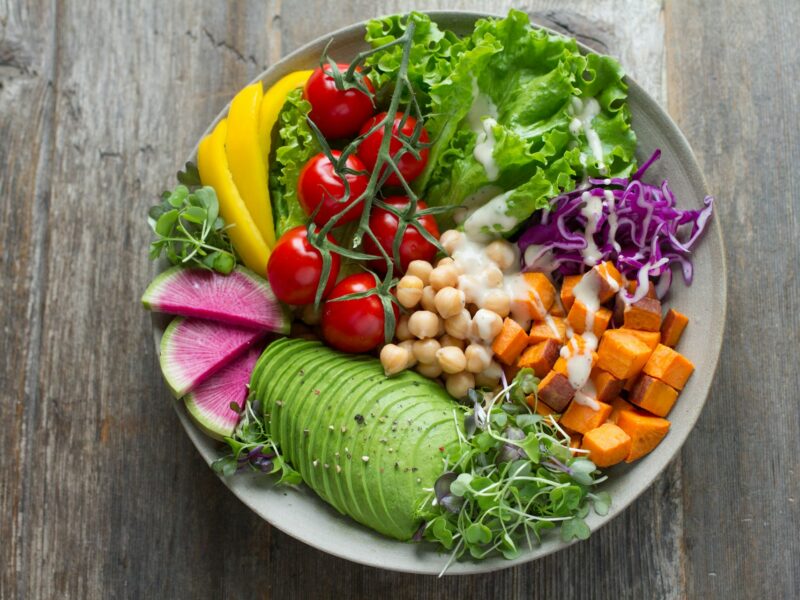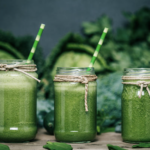Have you ever considered adopting a vegan lifestyle? With a rise in awareness about health, environmental sustainability, and animal welfare, more people are exploring how to incorporate vegan meals into their daily routines. Transitioning to a vegan diet can seem daunting at first, especially if you’re accustomed to a diet that includes animal products. However, making this shift doesn’t have to be an all-or-nothing approach. By introducing vegan meals gradually, you can enjoy the journey without feeling overwhelmed. In this blog, we will share simple steps and tips to help you smoothly integrate more vegan meals into your everyday diet.
Understanding Veganism
Veganism is more than just a diet; it’s a lifestyle choice that excludes the use of animal products for ethical, environmental, or health reasons. Unlike vegetarians who might consume dairy or eggs, vegans abstain from all animal-derived ingredients. This includes meat, dairy, eggs, and even honey. Understanding the ethos behind veganism can significantly motivate and guide your dietary choices, making it easier to embrace plant-based meals. This foundation also helps in appreciating the broader impacts of your dietary choices, such as reduced animal cruelty and lower environmental footprint.
Finding Vegan Alternatives to Favorite Dishes
One of the joys of vegan cooking is discovering how to recreate your favorite dishes without animal products. For example, a classic like the Panera bread broccoli cheddar soup recipe can be transformed into a vegan delight with a few minor tweaks, such as using plant-based cheese and cream. Start by identifying the dishes you love and explore vegan substitutes available in the market, such as nut-based cheeses, soy, almond or oat milks, and meat alternatives made from tofu, tempeh, or seitan. This approach not only makes the transition smoother but also expands your culinary skills and palette.
Starting with One Vegan Meal a Day
A practical way to ease into veganism is to begin by replacing just one meal a day with a vegan option. This could be a vegan breakfast smoothie, a hearty salad for lunch, or a plant-based dinner. By gradually increasing the number of vegan meals in your diet, you allow your taste preferences and cooking habits to adjust naturally. In addition, this slow pace helps mitigate any digestive adjustments your body might need to make to new foods and ingredients, making the transition easier on your body as well.
Stocking a Vegan Pantry
To successfully prepare delicious vegan meals, having a well-stocked pantry is essential. Key staples include a variety of legumes (like lentils, chickpeas, and black beans), grains (such as quinoa, rice, and oats), nuts and seeds, and a wide range of spices and herbs that will help enhance the flavor of your dishes. It’s also important to familiarize yourself with vegan condiments like soy sauce, mustard, vegan mayo, and nutritional yeast, which can add a cheesy flavor to dishes without any dairy. Reading labels becomes crucial as some products may have hidden animal-derived ingredients; always look for products certified vegan to be safe.
Exploring Vegan Protein Sources
Protein is often a major concern for those new to veganism, but there are numerous plant-based proteins that are both nutritious and satisfying. Lentils, chickpeas, tofu, tempeh, and a variety of beans can serve as excellent protein sources. Incorporating these into your meals ensures you’re meeting your nutritional needs without animal products. For instance, a stir-fried tempeh or a tofu scramble can provide a protein-packed meal that’s also rich in flavor and texture. Experimenting with these different sources can also introduce you to new dishes and cooking methods, keeping your meal plan diverse and exciting.
Cooking Techniques and Tips
Cooking vegan food involves some unique techniques that can make plant-based ingredients shine. Learning to sauté with water or vegetable broth instead of oil, for example, can keep your meals healthier. Understanding how to balance flavors with acids like lemon juice or vinegars and which spices work best with which vegetables can transform your dishes. Vegan baking might require some practice too, as it often utilizes substitutes for eggs and dairy. Experiment with flaxseeds or chia seeds mixed with water as an egg replacement, and discover the rich textures that avocado or mashed banana can bring to your baked goods.
Eating Out and Social Events
Maintaining a vegan diet while dining out or attending social events can seem challenging at first, but it’s quite manageable with some preparation. Research restaurants beforehand to find vegan-friendly options, and don’t hesitate to call ahead to see if a chef can accommodate your dietary needs. When attending events, consider eating beforehand or bringing a vegan dish to share. This not only ensures you have something to eat but also introduces others to how delicious vegan food can be.
Dealing with Cravings and Setbacks
Switching to a vegan diet doesn’t mean you’ll never crave non-vegan foods. It’s natural to miss certain flavors and textures, but there are many vegan products and recipes designed to mimic these tastes. Vegan junk food is also available, like dairy-free ice creams and meatless burgers, which can help satisfy fast food cravings. If you do slip up, don’t be too hard on yourself. Transitioning to a vegan diet is a process, and occasional setbacks are part of the learning curve.
Incorporating International Vegan Dishes
Exploring international cuisines can greatly enrich your vegan menu. Many cultures offer a plethora of naturally vegan dishes that are both flavorful and satisfying. Try making a hearty Moroccan tagine, an aromatic Thai curry, or some spicy Indian dal. These dishes are not only filling but also packed with spices that boost both the taste and nutritional profile of your meals.
Staying Informed and Motivated
Staying informed through books, documentaries, and reliable online resources can greatly support your vegan journey. Joining vegan forums and social media groups can also provide encouragement and advice from more experienced vegans. Attending vegan food fairs and subscribing to vegan cooking channels can inspire new ideas and keep your diet exciting. Remember, connecting with the vegan community not only supports your own lifestyle change but also contributes to a larger movement towards more sustainable and ethical eating practices.
Conclusion
Incorporating more vegan meals into your diet is an admirable goal that benefits not only your health but also the planet. Each step, from mastering vegan cooking basics to exploring global vegan dishes, contributes to a comprehensive understanding and appreciation of this diet. Embrace the diversity of flavors and ingredients available in vegan cuisine, and enjoy the creativity that comes with preparing and consuming food that is good for both you and the environment. Transitioning to veganism is a rewarding endeavor that offers endless opportunities to grow and thrive in your culinary exploits and ethical commitments.








 Male Pampering: Why Everyone Should Try It
Male Pampering: Why Everyone Should Try It